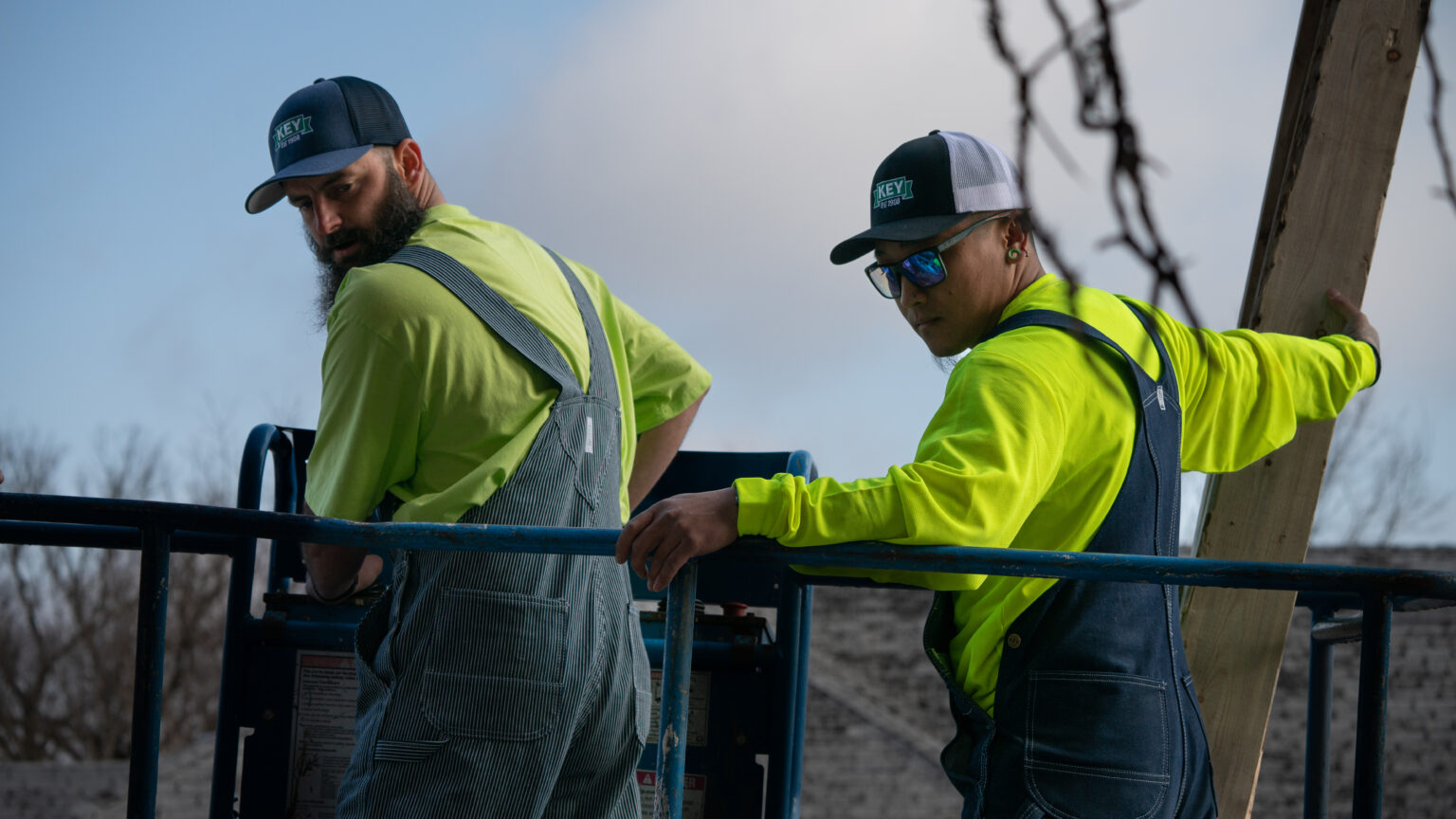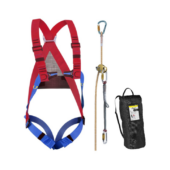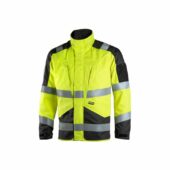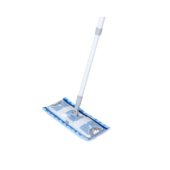Facing the challenges of cold European winters on construction sites can be challenging but manageable, and the right winter overalls make all the difference.
This guide ensures you’ll find the ideal pair that balances warmth, comfort, and safety while meeting all European standards.
As experts in winter workwear, we’ll equip you with all the insights to confidently choose the perfect overalls and even help you prepare for what comes next, like pairing them with complementary gear.
For an in-depth overview of winter workwear, refer to our main article, “Work Overalls For Winter: The Ultimate Guide”.
Key Features To Look For in Winter Work Overalls

1. Insulation and Warmth
Your overalls should provide excellent insulation to trap heat. Look for materials like polyester or Thinsulate, which are lightweight yet effective at retaining warmth. Quilted lining often adds an extra layer of comfort.
2. Waterproofing and Weather Resistance
Winter work often requires thoughtful preparation for snow, rain, and sleet, ensuring you are equipped for any weather conditions. Ensure the overalls are waterproof or water-resistant, with sealed seams to prevent leaks. A DWR (durable water repellent) coating is a practical feature to keep moisture at bay.
3. Mobility and Comfort
Opt for overalls designed for ease of movement. Stretch panels, articulated knees, and adjustable straps can significantly enhance mobility during demanding tasks.
4. Safety Standards Compliance
Overalls should comply with European safety standards such as EN 343 for weather resistance and EN ISO 20471 for visibility if your job requires high visibility clothing. You can learn more about these standards from official European Commission resources.
5. Durability
Construction environments are challenging, so your overalls should be abrasion-resistant and reinforced in high-wear areas like knees and elbows.
Sizing and Fit: Getting It Right
Wearing the right size ensures maximum comfort and performance. Winter overalls should fit snugly to retain warmth but allow enough room for layering. Use the chart below as a reference:
| Measurement | Small (cm) | Medium (cm) | Large (cm) | Extra Large (cm) |
| Chest | 92-96 | 100-104 | 108-112 | 116-120 |
| Waist | 76-80 | 84-88 | 92-96 | 100-104 |
| Inseam | 74-76 | 78-80 | 82-84 | 86-88 |
For a detailed sizing guide, refer to this article.
Choosing the Right Material
When selecting materials for winter overalls, it’s essential to understand their unique properties. Here’s a comparison to help you decide:
| Material | Benefits | Best For |
| Polyester Blends | Lightweight, water-resistant, and insulating | Cold and wet conditions |
| Canvas | Highly durable and abrasion-resistant | Tough, abrasive work environments |
| Gore-Tex® | Premium waterproofing, breathable, and windproof | Extreme weather and prolonged outdoor tasks |
This table highlights the advantages of each material, allowing you to choose based on your specific needs and work environment.
Complementing Winter Work Overalls with Other Essentials
To stay fully protected, pair your overalls with other winter workwear:
- Winter Work Gloves: Ensure dexterity and warmth.
- Winter Safety Shoes: Provide grip and insulation.
- Winter Work Jackets: Add an extra layer of weather resistance.
- Winter Work Pants: Combine with overalls for maximum flexibility.
For detailed advice, check out our related guides:
- “How To Choose Work Jackets For Winter”
- “How To Choose Work Pants For Winter”
- “Work Overalls For Winter: The Ultimate Guide”
- “How To Choose The Right Winter Safety Shoes – A Buyer’s Guide”
- “Choosing The Right Work Gloves For Cold Weather”
Where to Buy Winter Overalls
Discover a range of winter overalls tailored for construction work on Droppe’s Winter Overalls Collection. With options designed for different needs and budgets, you’re likely to find one that meets your needs, whether it’s for long hours on a cold construction site or occasional outdoor tasks in harsh weather.
Conclusion
We hope this guide has empowered you to confidently select the best winter overalls for staying warm, safe, and productive on construction sites. By considering factors like insulation, waterproofing, and European safety standards, you can make an informed choice that suits your needs.
Explore our full range of winter overalls and related winter workwear to ensure you are equipped for any conditions and ready to tackle your tasks with confidence. If you have questions or need expert advice, our team is here to assist—ensuring you’re ready not just for this winter, but for every season ahead. Visit Droppe’s blog for more helpful resources.
Frequently Asked Questions
Check the care label, wash in cold or warm water with mild detergent, and avoid bleach/fabric softeners. Air-dry or use low heat to protect insulation and waterproof coatings.
Yes. Look for specialized fabrics (e.g., PVC, polyurethane) and ensure they meet relevant EN standards like EN 13034.
Look for windproof membranes (e.g., Gore-Tex®) and check EN 343 ratings for wind resistance.
Wear moisture-wicking thermals, add a warm mid-layer (like fleece), then top with overalls to lock in heat.
Make sure they’re fully dry, then hang or fold them in a cool, ventilated area away from direct sunlight or heat.

















